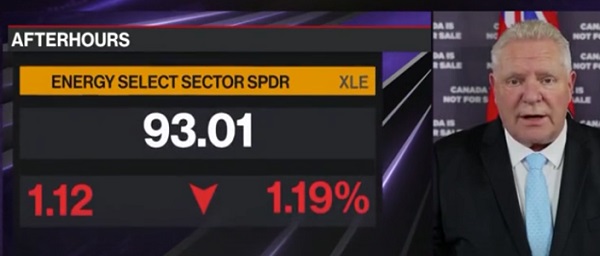Also Interesting
Why the gaming industry is thriving in Canada

The gaming industry is currently thriving in Canada, with the country being home to some of the world’s most popular gaming companies. This is due to several factors, including the country’s strong economy, its favorable tax laws, and regulations such as the recent casino Ontario law. The stable economy makes it an attractive place for businesses to set up shop. Additionally, the country’s tax laws are very favorable for businesses, which helps to keep costs down.
Another reason why the gaming industry is doing so well in Canada is because of the country’s highly educated workforce. Canada has many people with degrees in computer science and other related fields, making it an ideal place for gaming companies to find talented employees. Additionally, many Canadians speak English as their first language, which makes communication between employees and customers much easier.
The industry is expected to continue to grow in popularity in the years to come, making it an exciting time for those who are looking to get involved.
How does the gaming industry in Canada compare to other countries?
While the gaming business in Canada differs substantially from that in other countries, here are some broad tendencies:
- The Canadian gaming sector is dramatically smaller compared to the United States. This is attributable to various variables, such as that the Canadian market is smaller and less developed than the American market. Consequently, fewer gaming firms are operating in Canada, and these businesses are often smaller.
- However, Canada’s gaming business is expanding faster than that of the U. S. This is majorly due to the increased gaming popularity among Canadians and more investment in the Canadian gaming market.
- In terms of individual genres, the Canadian gaming business is primarily focused on console and PC games. This is attributable to various causes, including Canada’s long history in both these forms (with companies such as Ubisoft and Bioware being based in Canada).
The impact of the gaming industry on the Canadian economy
The gaming industry is a significant contributor to the Canadian economy, with an estimated worth of over $3.2 billion. This industry employs thousands of people across the country, and its impact is felt in many different sectors.
The gaming industry directly impacts the Canadian economy through its contribution to GDP. In addition, the sector indirectly supports many other industries, such as tourism and hospitality, through the spending of gamers and visitors to gaming events. The Canadian gaming industry is expected to reach roughly $5 billion by 2027.
The gaming industry also supports the development of new technologies and applications, which can spill over to other sectors of the economy. For example, new software developed for video games can be used in other areas, such as medical imaging or military training simulations.
The gaming industry is an integral part of the Canadian economy, and its impact is felt in many different ways.
The rise of e-sports in Canada
There’s no doubt that e-sports are on the rise in Canada. With more and more people getting into competitive gaming, it’s no surprise that e-sports are becoming more popular.
One of the reasons why e-sports are becoming more popular is because they’re more accessible than traditional sports. Anyone can pick up a controller or mouse and start playing, regardless of physical ability. E-sports also don’t require expensive equipment or facilities, making them more affordable.
Another reason for the rise of e-sports is the growing popularity of streaming services like Twitch and YouTube Gaming. These platforms allow gamers to share their gameplay with the world, and some of the most popular streamers have amassed huge followings. This has helped to raise awareness of e-sports and make them more mainstream.
As e-sports continue to grow in popularity, we can expect to see more tournaments, leagues, and teams pop up across Canada. So if you’re looking to get into competitive gaming, now is the time!
The future of the Canadian gaming industry
There is no doubt that the Canadian gaming industry is on the rise. With the release of several highly anticipated titles in the past few years and the success of Canadian-developed games such as “Assassin’s Creed III” and “Deus Ex: Human Revolution,” the industry is poised for continued growth in the years to come.
One of the most exciting aspects of the Canadian gaming industry is its diversity. While many countries are known for developing specific genres or game types, Canada has developers working on various titles across all genres. This diversity means that there is something for everyone in Canadian-developed games.
Another exciting aspect of the Canadian gaming industry is its focus on new and innovative gameplay mechanics. Many Canadian developers are constantly pushing the envelope regarding gameplay, coming up with new and unique ways to engage players. This commitment to innovation ensures that players will always have something new and exciting to experience when they play a Canadian-developed game.
The future of the Canadian gaming industry looks bright, with many talented developers working on various innovative and exciting games.
All in all, the gaming industry is booming in Canada for various reasons, from a supportive government to a growing market.
Also Interesting
The bizarre story of Taro Tsujimoto

The National Hockey League (NHL) has seen its fair share of strange moments, but few compare to the bizarre and hilarious tale of Taro Tsujimoto, a player who never existed. His “selection” in the 1974 NHL Draft remains one of the most legendary pranks in hockey history. If you want to wager on actual players, making the 1xBet app download is definitely a great idea.
In the 1970s, the NHL Draft was a much less glamorous event than today. It was a tedious process conducted over the phone, with teams calling in their picks. The 3 biggest highlights of what happened during that year’s draft were:
- the draft dragged on for hours;
- there were multiple rounds and teams selecting unknown prospects from obscure leagues;
- frustrated with the monotony, Buffalo Sabres general manager Punch Imlach decided to have a little fun.
As the 11th round approached, Imlach instructed his team’s representative to draft Taro Tsujimoto, a supposed forward from the Tokyo Katanas of the Japan Ice Hockey League. The name sounded authentic enough. The league officials, unfamiliar with Japanese hockey, accepted the pick without question. By downloading the 1xBet app you will also be able to wager on great NHL teams too.
A small problem
There was a small problem with all of this, as 2 things didn’t exist: Tsujimoto and the Tokyo Katanas. Imlach had completely fabricated the player as a joke, taking advantage of the NHL’s lack of verification. When it comes to NHL wagers, there is no better platform than the 1xBet Canada site.
For weeks, the league listed Tsujimoto as an official draft pick, and even some newspapers reported on Buffalo’s mysterious new Japanese prospect. Eventually, the Sabres admitted the hoax, and the NHL was forced to retroactively erase the selection from its records.
Despite being a fictional player, Taro Tsujimoto took on a life of his own. Buffalo Sabres fans embraced the prank, and over the years, his name has become a cult legend in hockey culture. Some fans even wore jerseys with “Tsujimoto” on the back. The joke persisted so much that when EA Sports released NHL video games, players could occasionally find Tsujimoto in the game’s draft pool as a hidden Easter egg.
More than just a prank, the story of Taro Tsujimoto highlights 2 things: the quirks of old-school sports management and the creativity of one of hockey’s most colorful executives. Today, with the draft process being highly scrutinized and broadcast live, such a prank would be impossible. But Tsujimoto’s legacy lives on as one of hockey’s greatest inside jokes. What is not a joke are the great rewards that a platform like the Canadian 1xBet site can give you.
Also Interesting
60% of Canadians gamble each month – why the industry is going from strength to strength

When it comes to regulating gambling, Canada has a somewhat relaxed approach. The Canadian Gaming Association oversees the industry, but it’s up to individual provinces to enact and enforce any laws relating to online casino gaming, sports betting, traditional casino gaming, and other forms of gambling.
Canada’s online casino gaming laws are not totally clear, but individual provinces are starting to put this right. Ontario was the first and did so when it launched its own regulated igaming market in April 2022. Now some other provinces have followed suit, creating a safer igaming environment for players in those provinces. Below is a look at gambling in Canada compared to other parts of the world, at gaming laws in Alberta compared to other provinces, and at the future of the Canadian, US, and UK gambling industries.
Canada: a forever love of gambling
Gambling in some form or other has always been popular in Canada. Way back in the 1990s, research found six in ten Canadians (60%) gambled every month. Additionally, four in ten (43%) spent between 1 and 20 Canadian dollars on gambling. Fast forward to today and the Canadian gambling market is worth 14.2 billion US dollars as of January 2024, according to data on the website of consumer and market data company Statista.
It seems Canada enjoys wagering just as much as two other countries that love a gamble: the US and the UK. Data on the Statista website shows that 49% of US adults took part in gambling activities in 2023. Fifty-six percent said their attitude towards gambling had relaxed, compared to the 50% of 2019.
The UK returned similar stats for the same year. Forty-eight percent of adults reported engaging in gambling activity. Online casinos generated the most gross gambling yield in 2023, but it was the nation’s National Lottery that people played the most.

Alberta: following Ontario’s lead
The regulatory developments in Ontario have triggered movement in Alberta. In May 2024, Bill 16, the Red Tape Reduction Amendment Act, made it through the process and later received Royal Assent to become law. The act removes the monopoly of gaming by a single government entity and will allow private operators, licensed by Alberta’s provincial regulator, to provide online gaming services in Alberta, meaning players will have a choice of more than one Alberta online casino to play at.
The regulation transforms Alberta into one of the more liberal provinces when it comes to online gambling, others being Quebec, Ontario, and British Columbia.
Several provinces, such as Novia Scotia and Northwest Territories, have no provincially regulated online gaming sites. Some also restrict betting on horse racing and/or other types of sports betting, obliging citizens to use international betting sites for freedom from caps and betting on as many events as they wish.

What lies ahead for the Canadian, US, and UK gambling industries?
Canada’s appetite for gambling is clear, and the industry’s online sector is beginning to thrive. Ontario has enjoyed vast success by creating its own regulated market, one which, in just its first year, saw Canadians place billions in wagers and the industry itself generate more than a billion in total gaming revenue.
Canada can expect to see other provinces follow Ontario’s lead and allow private operators to provide services in the province under license. The purpose of the regulation is player protection. Any province that develops a regulated market will focus on this, so there will also be regulations around the advertising of gambling services.
The US
Gambling online is the future for the US, too, although states are slow to legalize it. As of September 2024, 38 states had legalized sports betting, following the US Supreme Court’s ruling that states could regulate sports gambling directly.
Despite allowing sports betting, some states only permit in-person betting, and only a few states allow online casino gaming. Operators believe online casino gaming is the future of gambling.
The UK
In the UK, the use of artificial intelligence (AI) will get bigger and bigger. Companies have realized AI can enhance players’ experience and are embracing it more and more. For instance, sports betting websites can use it to crunch data and provide iGamers with stats and other data to make better betting decisions. They’re also understanding they can use AI to prioritize content players are likely to be interested in and to personalize their offerings and services to players’ preferences.
Canada enjoys gambling as much as America and the UK. Although laws around igaming are more of a grey area in Canada, some provinces are clearing the issue up by creating regulated markets and experiencing great success. As time goes by, more are sure to follow.
-

 2025 Federal Election2 days ago
2025 Federal Election2 days agoMORE OF THE SAME: Mark Carney Admits He Will Not Repeal the Liberal’s Bill C-69 – The ‘No Pipelines’ Bill
-

 Automotive2 days ago
Automotive2 days agoTrump Must Act to Halt the Tesla Terror Campaign
-

 Break The Needle2 days ago
Break The Needle2 days agoWhy psychedelic therapy is stuck in the waiting room
-

 2025 Federal Election2 days ago
2025 Federal Election2 days agoThree cheers for Poilievre’s alcohol tax cut
-

 2025 Federal Election1 day ago
2025 Federal Election1 day ago‘Coordinated and Alarming’: Allegations of Chinese Voter Suppression in 2021 Race That Flipped Toronto Riding to Liberals and Paul Chiang
-

 Alberta1 day ago
Alberta1 day agoBig win for Alberta and Canada: Statement from Premier Smith
-

 2025 Federal Election1 day ago
2025 Federal Election1 day ago‘I’m Cautiously Optimistic’: Doug Ford Strongly Recommends Canada ‘Not To Retaliate’ Against Trump’s Tariffs
-

 Alberta2 days ago
Alberta2 days agoEnergy sector will fuel Alberta economy and Canada’s exports for many years to come





